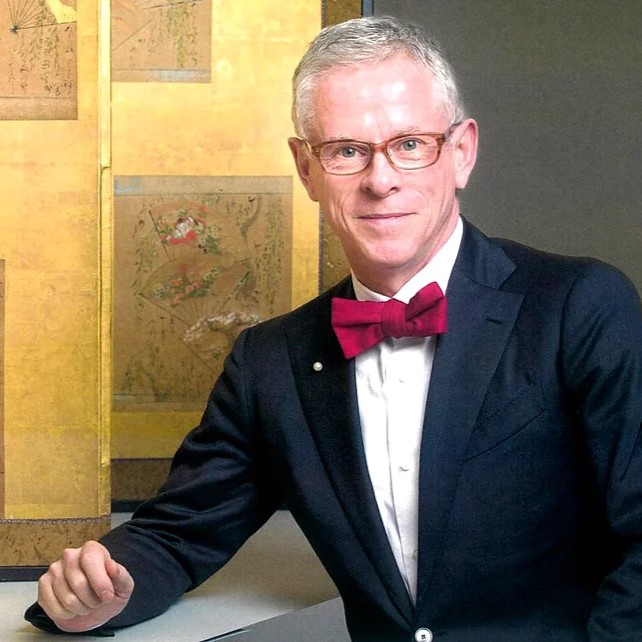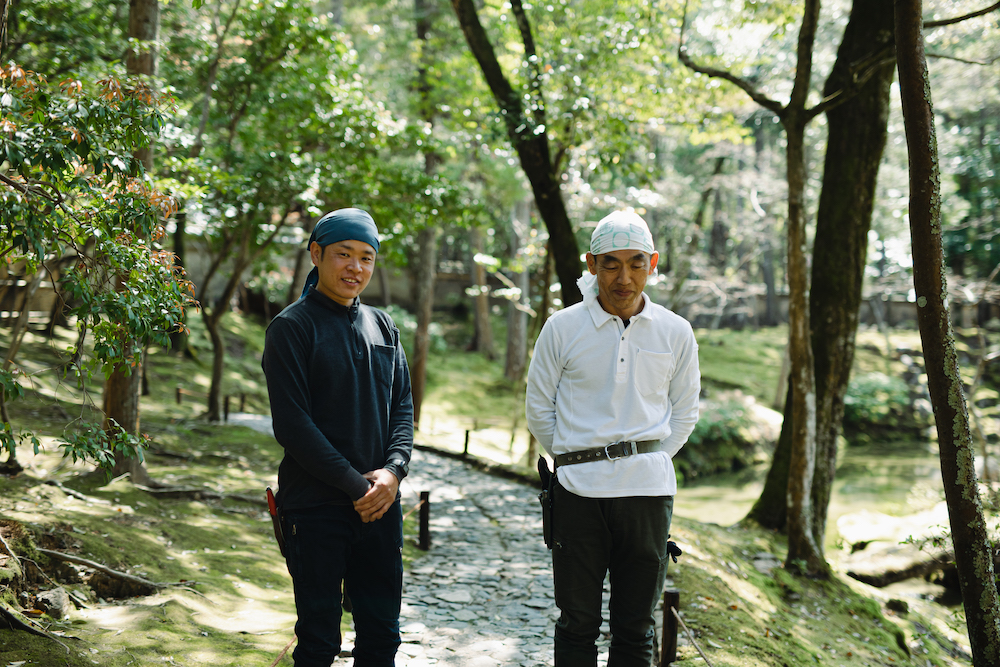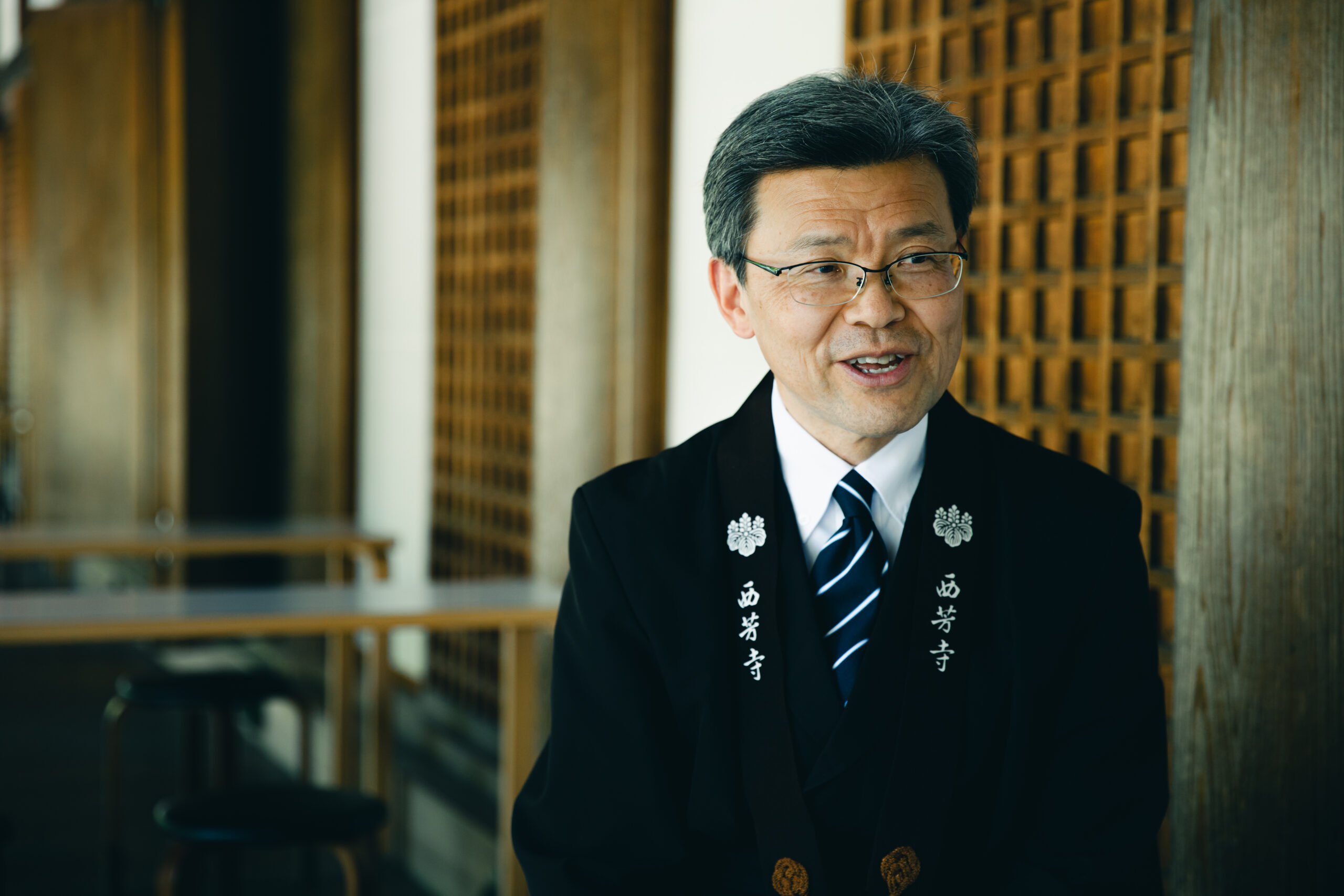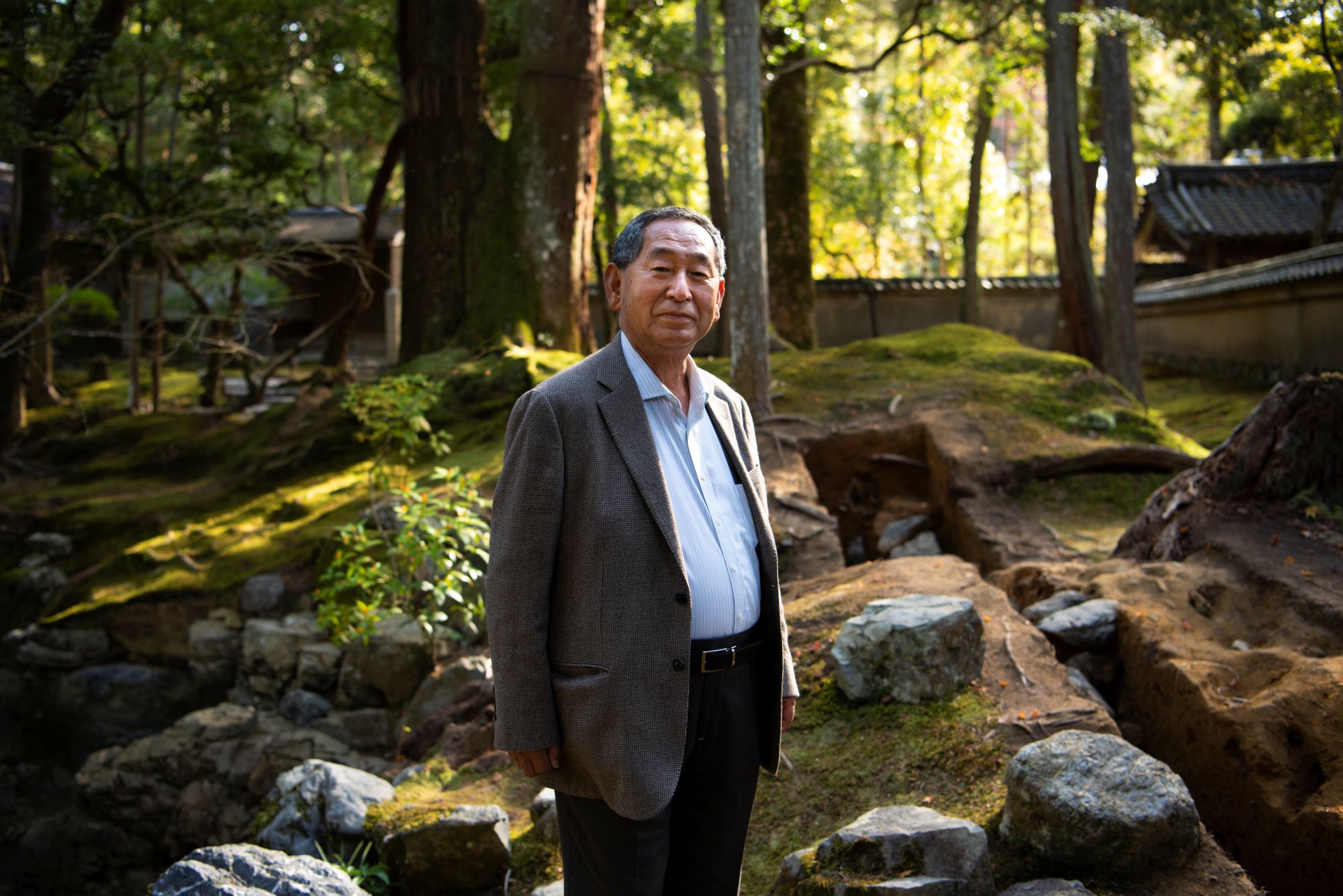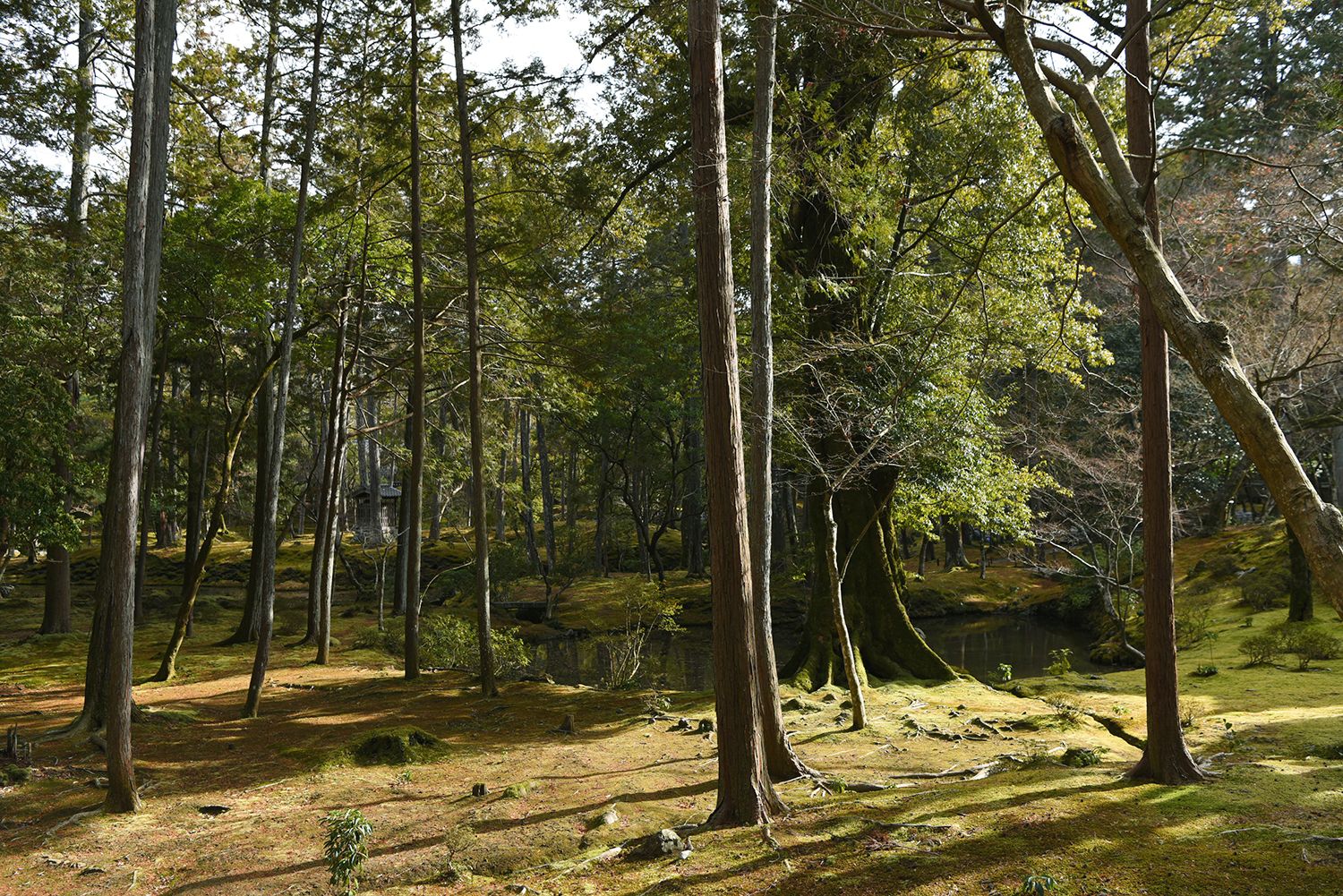2025.6.20
Winds of Gold—A Hundred Views of Saihoji Vol. 14
Peter MacMillan / a translator, scholar, poet
In this series of essays on Saihoji the renowned translator of Japanese poetry and poet Peter MacMillan records his impressions of and reflections on his visits to the garden throughout the four seasons. We hope that through these essays you the readers and fans of Saihoji can feel as if you are also present in the magical garden even when you cannot visit us.
Living in the Now while Honoring the Past
Today a light rain is falling as I visit, bathing all in the greenest green but also making the earth look blacker and the barks of trees dark and the contrasts sharper. It is a soft rain and reminds me of the rains of the distant past of my childhood in Ireland, where it rains on many days of the year. And it also made me wonder what the distant past was like in Saihoji.
Saihoji is cradled in an area with a deep and ancient history. On this occasion I would like to introduce the Hata clan and Hata no Kawakatsu who was close to the famous crown prince Shotoku Taishi of the Nara period. Shotoku Taishi, who penned the first constitution of Japan, is one of the most famous figures in Japanese history, and according to one tradition there used to be a villa of Shotoku Taishi in the area near Saihoji. By learning about Kawakatsu we can get a glimpse of the period when Saihoji was established.

In the Kofun period (from the 3rd to 7th century), the Hata clan, which claimed descent from Qin Shi Huang the first emperor of the Qin Dynasy, migrated from the Korean Peninsula and settled in Japan. The main branch of the Hata clan settled in Yamashiro Province or present day Arashiyama, Saga, Uzumasa, etc., along the Katsura River and in the present-day Ukyo Ward of Kyoto City and around the present-day Fushimi Ward.
Though in Japan since before that time, the Hata clan is believed to have been established in the late 5th century during the reign of Emperor Yuryaku. Hata no Sake no Kimi, a powerful figure of the time, presented a huge amount of silk to the Emperor Yuryaku. The name of the nearby town of Uzumasa is said to derive from the Chinese character uzutakaku (堆く) which means “to pile up high,” just as the great amount of donated silk was piled up high. These days Uzumasa is famous for a sacred place for movie sets and was once known as the Hollywood of Japan.
One of the most famous members of the clan was Hata no Kawakatsu. Many legends surround him, including his connection to Sarugaku, and he was said to be close to Shotoku Taishi. He is also said to have established the oldest Buddhist temple in Kyoto, Hachioka Temple (now known as Koryu-ji Temple). Kawakatsu was granted a Buddha statue by Prince Shotoku at beginning of the 7th century and established the temple. One of its most famous Buddhist sculptures is the Crowned Maitreya. It is a national treasure and is one of the most beautiful Buddhist sculptures in all of Japan. I hope visitors can see it on their way home from Saihoji. I like to think of Kawakatsu and Shotoku Taishi having tea together in or near Saihoji all those years ago.
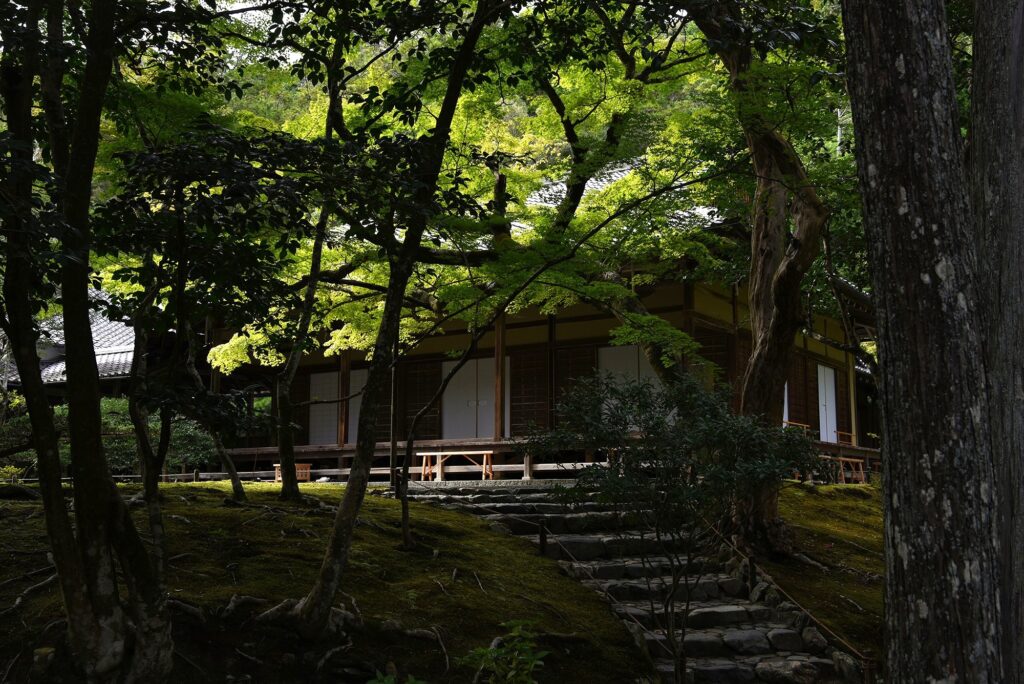
We think of the practice of Zen of focusing on the present moment. But reading about the ancient past creates a historical context that can deepen our understanding of Saihoji and understand its relation to the local area and community. Today I introduced just one town and one character from the ancient history of the area.
Thinking about that made me realize that there is also a lesson for us too. Though we should aim to live fully in each moment, we should also recognize that it is our past and the past of our ancestors that have made us the persons we are today. Sometimes there may be nice memories but sometimes there may be mistakes or even sins in our past. But we can always atone for the mistakes of our past. So, let’s aim to live a rich life in the present that honors our own past, warts and all.
Peter MacMillan
Peter MacMillan is a prize-winning translator, scholar, poet, and President of The Moon is a Boat Co., Ltd.
His translation, One Hundred Poets, One Poem Each (Hyakunin Isshu), was published in 2008, winning prizes in both Japan and the United States. After that, he completed an English translation of The Tales of Ise (Ise Monogatari), which was published by Penguin in 2016. He has also published a collection of poetry entitled Admiring Fields.
Awards:
Recipient of the Donald Keene Center Special Prize for the Translation of Japanese Literature
Recipient of the 44th Special Cultural Translation Prize from the Japan Society of Translators
Nominated for the PEN Award for Poetry Translation for the English translation of The Tale of Ise (Ise no Monogatari)
